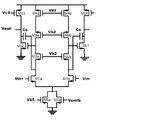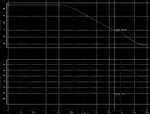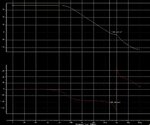michaelhust
Junior Member level 1
Hi, everyone!
For the op-amp compensated in the way as follows, there is a RHP zero a LHP zero lower than the nondominate pole.
That makes it difficult to compensate , so i wonder which position introduces the zeroes and whether there is someway to modify the zeroes to a higher position.
Thanks for your advice!

For the op-amp compensated in the way as follows, there is a RHP zero a LHP zero lower than the nondominate pole.
That makes it difficult to compensate , so i wonder which position introduces the zeroes and whether there is someway to modify the zeroes to a higher position.
Thanks for your advice!

Last edited:

